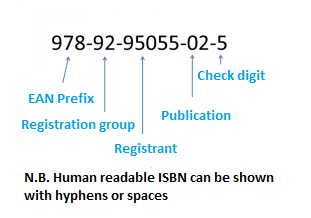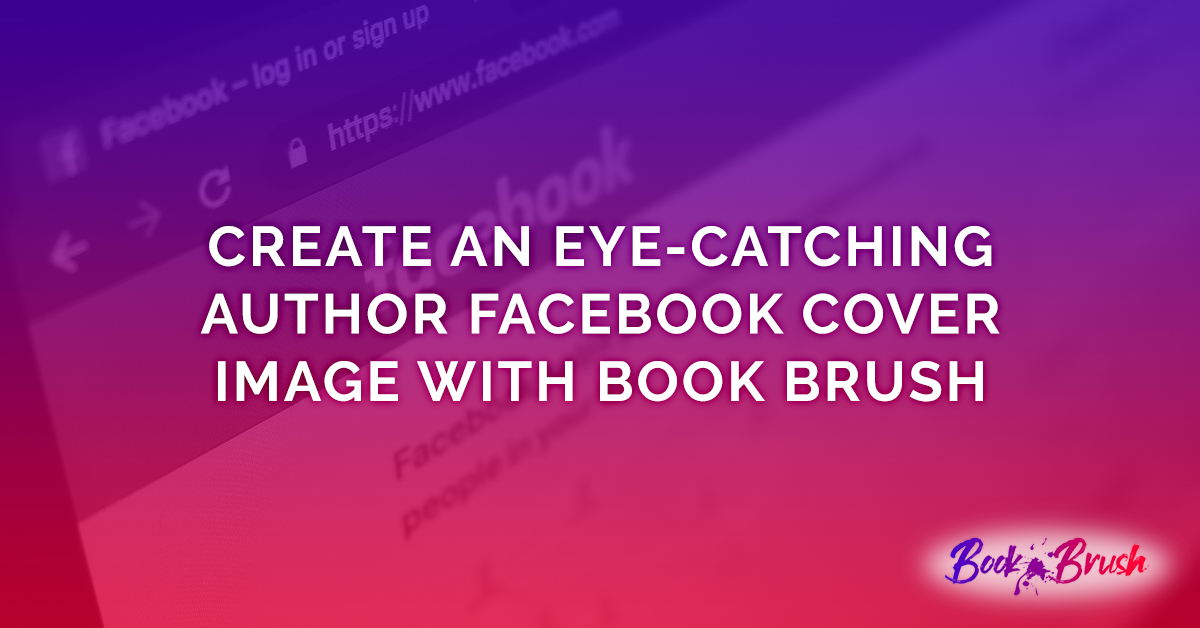When I self-published my first book in 2015, I researched ISBNs. I knew the book required one, but I wasn’t sure where to buy and why it was needed. I guessed it related to sales and marketing, but I was a little off the mark. So, if you’re curious about when and why you need an ISBN for your book, read on.
You’ve probably noticed the ISBN bar code on almost any book you purchase. It looks something like this:
Why do all retail books have one? Is it necessary? What about digital and audiobooks? First, you need to know the ISBN’s purpose.
ISBN is an abbreviation for International Standard Book Number. It’s used to track versions of books in all formats and their sales. The numeric code is printed on the copyright page of your book or eBook or associated with an audiobook and encoded into the barcode for commercial use. Here is the ISBN breakdown:

The EAN Prefix is the European Article Number (3 digits). It is:
- Barcode standard
- Part of the product identification code
- Used to print the sales bar code on the book
- The EAN is either 978 or 979. It is always 3 digits.
The remaining digits are the actual ISBN or International Standard Book Number. These numbers mean:
- The next numerical group is the Registration Group Element. They identify the particular country, geographical region, or language area participating in the ISBN system and may be between 1 and 5 digits. The US Code is 1
- The Registrant element identifies the publisher or imprint and can be up to 7 numbers.
- The Publication element identifies the edition and format of a specific title and may be up to 6 digits.
- The final single number is the Check Digit, which mathematically validates the rest of the number.
You can see that the ISBN number can be up to 21 numbers. Most of the ISBNs for books are thirteen digits. You don’t need the EAN for books published in the United States, so you often see only the 10-digit number listed. Here is a copyright page showing ISBNs listed:

About the Back Cover Barcode
The book’s barcode is based on the ISBN number. When you self-publish with Amazon, Draft2Digital, or any other indie publishing company, they will print the barcode on the book. You do not need to order a barcode unless you print your own books.
When your cover artist creates a full cover for your paperback, they know to leave a block for the barcode clear of any text or images. This is in a specific area. If you create your own cover, you can download a template from Amazon for your book cover. You import the template into a photo program like PhotoShop or PSPrint and overlay your front, spine, and back cover, then add back cover text and save it to the proper size and resolution. Unless you’re really good with the program, it can be time-consuming.
The easy way to do this is to use Book Brush to create your paperback cover. Even if you have a premade front cover, you can quickly adapt it to a print cover with Book Brush’s tools.
Check out the Cover Creator on Book Brush. Also, watch Cover Creator 101 at Book Brush’s webinars to learn more.
I used the Cover Creator tool with a front cover I purchased for my last book, which worked beautifully. It produced the precise file to upload to Amazon for the paperback.
When do I need an ISBN?
You may think you only need to purchase one ISBN for your book, but that would be incorrect. How many formats are you planning to release? If you plan a hardcover, a paperback, an e-Book and an audiobook, you will need an ISBN for each version. If you make changes to any of those book versions, you will need a new ISBN for the changed version. To ensure the customer receives the latest book, the new ISBN will have a different number attached to a record on the Books in Print catalog showing the book’s version number and the revision update.
To clarify, a changed version applies to:
- A significant change to the text. Spelling and typo error corrections are not significant changes. This refers to whole sections being revised, added to, or updated enough to change the story. For instance, if you rewrite parts of your first book to improve the quality of the writing to your level now, then you would call it Version 2 and apply a new ISBN. If you just go back to add a few words you missed or misspelled in editing, then you don’t need a new ISBN.
- A new cover and/or title on your book. Have you ever bought a book with a great cover only to discover you already had it? Even if you don’t change anything else, you need a new ISBN. As a courtesy, if you change the cover or title, you should include this information in your sales blurb and on the back cover so readers know it was published with a different cover or name.
- A box set or a group of related books. Box sets are a great way to bundle your trilogy or series. However, it’s a new product and requires a unique ISBN. By the way, Book Brush can help you create the box set image by using the Box Set Creator tool.
- A previously published book with a new publisher. If you’ve used a publisher and they return the rights to you or the company folds, you can self-publish it. However, you will need a new ISBN even if you don’t change the text or cover. You will want to change the publisher’s information on the copyright page and add your new ISBN.
How to get an ISBN
By now, you’re thinking, where do I get an ISBN, and what does it cost? If you’re publishing in Canada, they’re free. If you’re in the UK, you can purchase from the Nielsen IBSN Store. For Australia, go to the Australian ISBN Agency at Thorpe-Bowker.
In the United States, Bowker is the only authorized source for ISBNs. They maintain the Books in Print catalog, the leading bibliographic database for publishers, retailers, and libraries worldwide. You’ll find them at: https://www.myidentifiers.com/.
The ISBNs begin at $125 for one, but most writers need more than one, and the prices decrease when you purchase more. You can get 10 for $295. But if you publish a lot, consider purchasing 100 for $575. Bowker also sells to publishing houses and other sellers at a significant discount, which is why many businesses sell them for as little as $5 each. Be warned. They have legal ISBNs, but the publisher information will show their brand on it. This does not give them any claim on your book. You are still the owner, even if you haven’t copyrighted it. But if you have your own self-publishing identity, you might prefer to have your brand name as the publisher.
This takes us to Amazon, Draft2Digital, Barnes & Noble, Apple and other independent book publishers. You have the option of using your own ISBN or one of theirs. For Amazon, Barnes & Noble, & Draft2Digital, their ISBNs are free. It might show as self-published or show the publisher’s name on the ISBN record. Other publishers may require you to purchase one.
If you get an ISBN from Amazon, then go to Barnes & Noble to publish your book, you will need a different ISBN. The same is true of the other publishers. You cannot take a Draft2Digital ISBN to Amazon and publish with it and vice versa. Otherwise, you can buy an ISBN and use it at other publishers as long as you publish under your brand.
The eBook is a different story at Amazon since they assign your book an ASIN or Amazon Standard Identification Number. You can use a purchased ISBN, but they will still use their ASIN. Personally, I go ahead and use the ASIN for my eBooks.
The only books not needing an ISBN are small-run ones for family and friends or independently printed ones that you don’t care about getting into shops or distribution anywhere else. If it is sold in a shop or online, you should have an ISBN since it’s part of the tracking system for your book.
In summary, if you plan to self-publish through Amazon, Barnes & Noble, or Draft2Digital you’re fine using their free ISBNs. If you plan to publish on multiple platforms, and you want all your books under your own self-publishing brand, you’re better off purchasing your own ISBNs. This answers most questions about ISBNs, but you can learn more at Bowker’s website.
 Article by Rene Averett writing as Lillian I Wolfe and Riona Kelly
Article by Rene Averett writing as Lillian I Wolfe and Riona Kelly
Founder and principal contributor of Pynhavyn Press, Rene Averett proves that it’s never too late to start on a new path as she began publishing novels after a lifetime of writing. She writes paranormal, urban fantasy, and sci-fi under the pen name of Lillian I. Wolfe and suspense romance and cozy mysteries under Riona Kelly, while her own name is reserved for low-carb cookbooks and children’s books.
Rene has lived in Reno, Nevada since 1977, making her almost a native. She is a member of the High Sierra Writers.
Spoiled by the view of the beautiful Sierra Nevada Mountains and the Virginia City Foothills, she shares with South Reno home with her long-time companion, a stubborn dog, and two feline overlords. In addition to cooking, she attempts a bit of gardening, plays the guitar, and loves to read.








